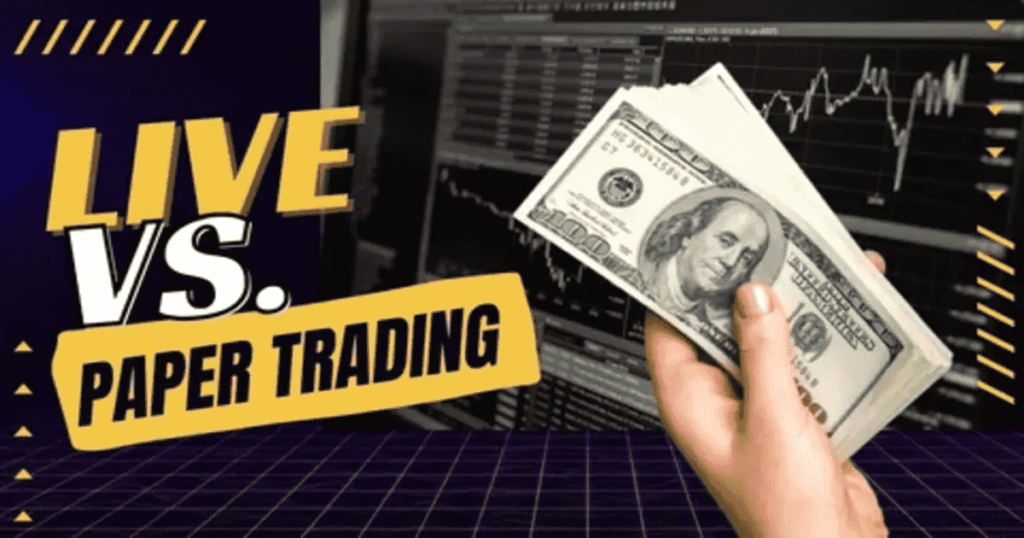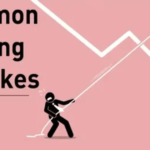Introduction
Entering the world of trading can be both exciting and overwhelming. One of the biggest dilemmas beginners face is whether to start with paper trading (simulated trading) or jump straight into real trading (live trading with real money).
Both approaches have their pros and cons, and choosing the right one depends on your experience level, risk tolerance, and financial goals. In this comprehensive guide, we’ll explore:
- What paper trading and real trading are
- Key differences between the two
- Advantages and disadvantages of each
- Who should use paper trading vs. real trading
- How to transition from paper trading to real trading
By the end of this article, you’ll have a clear understanding of which method suits your trading journey.
1. What Is Paper Trading?
Paper trading, also known as simulated trading, allows traders to practice buying and selling assets without risking real money. Instead, traders use virtual funds to execute trades in real market conditions.
How Paper Trading Works
- Traders use a demo account provided by brokers or trading platforms.
- Prices, charts, and order execution mimic real markets.
- No actual money is gained or lost—only simulated profits and losses.
Popular Paper Trading Platforms
- Thinkorswim (TD Ameritrade) – Great for stocks and options.
- MetaTrader 4/5 (Forex & CFDs) – Ideal for forex traders.
- TradingView Paper Trading – Useful for technical analysis practice.
2. What Is Real Trading?
Real trading involves executing trades with actual money in live markets. Unlike paper trading, profits and losses directly impact your capital.
How Real Trading Works
- Requires funding a brokerage account.
- Every trade affects your real financial position.
- Emotions like fear and greed play a significant role.
Common Real Trading Platforms
- Interactive Brokers – Best for advanced traders.
- Robinhood – Beginner-friendly for stocks and crypto.
- eToro – Social trading with copy-trading features.
3. Key Differences Between Paper Trading and Real Trading
| Factor | Paper Trading | Real Trading |
|---|---|---|
| Money at Risk | None (Virtual) | Real Capital |
| Emotional Impact | Minimal | High (Fear/Greed) |
| Execution Speed | Slight delay | Real-time |
| Learning Curve | Risk-free practice | Real consequences |
| Market Impact | No effect | Affects liquidity |
4. Advantages of Paper Trading
Risk-Free Learning
- Perfect for beginners to understand market mechanics.
- No financial loss while mastering strategies.
Test Strategies Without Consequences
- Experiment with technical indicators, scalping, or swing trading.
- Identify flaws in your approach before going live.
Familiarize Yourself with Trading Platforms
- Learn order types (market, limit, stop-loss).
- Practice using charts and analytical tools.
Disadvantages of Paper Trading
- No Emotional Pressure – Real trading involves psychological stress.
- Slippage Differences – Demo accounts may not reflect real execution speeds.
- Overconfidence Risk – Success in simulations doesn’t guarantee real profits.
5. Advantages of Real Trading
Real Profit Potential
- Actual gains can be withdrawn and used.
- Builds real-world trading discipline.
Emotional Conditioning
- Learn to manage fear, greed, and impulsive decisions.
- Develop mental resilience for volatile markets.
Better Understanding of Market Dynamics
- Real orders affect liquidity and execution.
- Experience real slippage and spreads.
Disadvantages of Real Trading
- Financial Risk – Beginners can lose money quickly.
- Stress and Anxiety – Poor decisions due to emotional trading.
- Learning Curve Costs – Mistakes can be expensive.
6. Who Should Use Paper Trading?
Absolute Beginners
- If you’ve never placed a trade before, paper trading is the safest start.
Strategy Developers
- Test new trading systems without financial risk.
Traders Switching Markets
- Forex traders moving to stocks, or vice versa, can practice first.
7. Who Should Use Real Trading?
Experienced Practitioners
- If you’ve mastered simulations, real trading is the next step.
Traders with Risk Capital
- Only trade money you can afford to lose.
Those Needing Real Emotional Training
- Paper trading can’t replicate the stress of real losses.
8. How to Transition from Paper Trading to Real Trading
Switching from simulation to live trading can be daunting. Follow these steps for a smooth transition:
Step 1: Start Small
- Begin with a micro or small live account (e.g., $100-$500).
- Trade with minimal position sizes to limit risk.
Step 2: Keep a Trading Journal
- Track both paper and live trades to compare performance.
- Analyze mistakes and refine strategies.
Step 3: Gradually Increase Exposure
- Once consistently profitable, scale up position sizes.
- Avoid jumping into large trades too quickly.
Step 4: Manage Emotions
- Accept that losses are part of trading.
- Stick to your trading plan—don’t let fear or greed dictate moves.
9. Common Pitfalls When Moving from Paper to Real Trading
Overestimating Skills
- Demo success ≠ real success. Real markets have fees, slippage, and emotions.
Risking Too Much Too Soon
- Avoid YOLO trades—risk management is crucial.
Ignoring Psychological Factors
- Real money triggers fear of loss and greed for profits.
10. Final Verdict: Paper Trading vs. Real Trading
| Scenario | Recommended Approach |
|---|---|
| Complete Beginner | Start with Paper Trading |
| Intermediate Learner | Mix Both (Small Live + Demo) |
| Advanced/Experienced Trader | Focus on Real Trading |
Best Approach for Most Traders:
- Begin with paper trading to learn basics.
- Transition with a small live account to experience real emotions.
- Scale up gradually as confidence and consistency grow.
Conclusion
Both paper trading and real trading serve essential roles in a trader’s journey. Paper trading is ideal for beginners to practice without risk, while real trading is necessary to develop emotional discipline and real-world experience.
The best traders often start with simulations, refine their strategies, and then move to live trading with caution. No matter which path you choose, continuous learning and disciplined risk management are key to long-term success.


